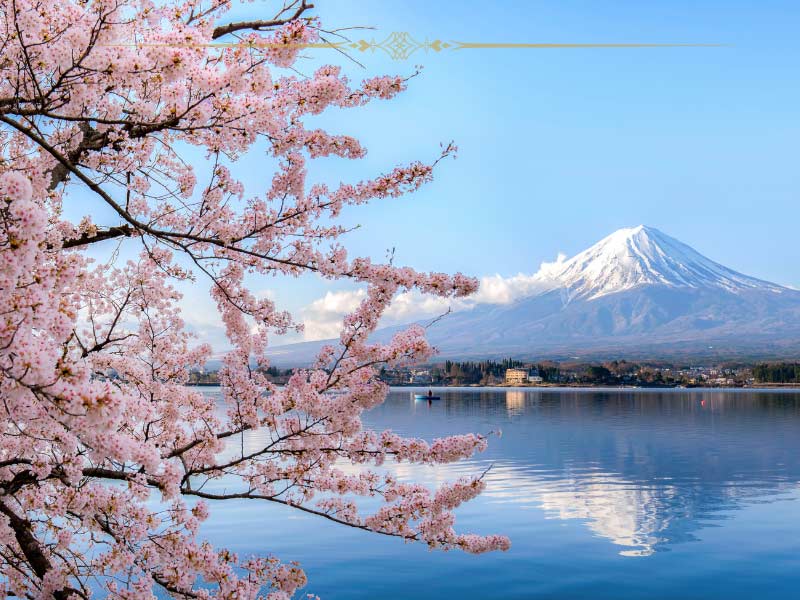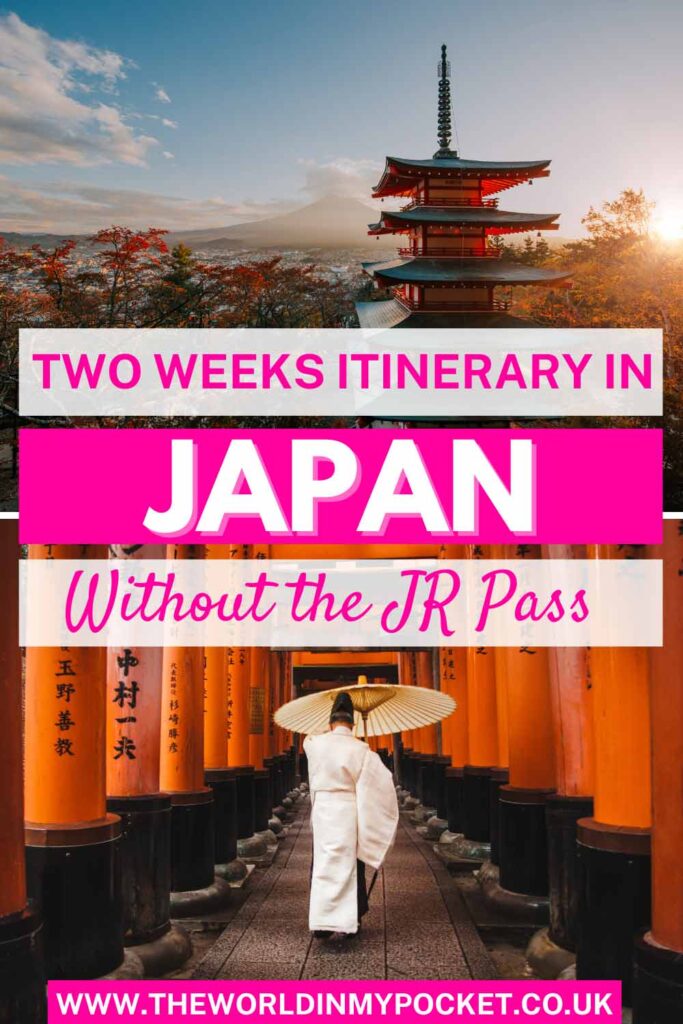If you’re planning a trip to Japan, you’ve probably heard a lot about the famous Japan Rail Pass. This handy pass gives you unlimited travel on trains operated by Japan Rail.
However, it’s normal to wonder if this pass is really needed for your two-week holiday. It can be quite expensive, and the last thing you want is to regret buying a pass you don’t end up using.
Let’s have a look at how you can travel around Japan without the nationwide JR Pass, while still keeping your plans affordable.
When the JR Pass Isn’t the Best Fit

The Japan Rail Pass is a solid option if you plan on travelling across all of Japan. However, it’s not always the best deal.
The 14-day JR Pass currently costs approximately £400. To make that worthwhile, you’d need to travel between several far-flung cities within two weeks.
What Are Your Alternatives?
There are many alternatives to the JR Pass for 14 days. Most tourists stick to the major cities of Tokyo, Osaka and Kyoto on their first trip to Japan. If this is your plan, there are other travel options that could save you some cash.
One alternative is to plan your trip around the use of regional rail passes. These are much cheaper than the full pass.
They cover major routes and local trains. Regional rail passes also offer you more freedom. They don’t lock you into a single start date or force you to travel non-stop.
Two regional passes often recommended for this type of trip are:
- Hokuriku Arch Pass (7 days): This covers travel between Tokyo , Kanazawa, and the Kansai region (Kyoto, Osaka, Nara).
- Kansai Wide or Kansai-Hiroshima Area Pass (5 days): This pass allows you to travel to Kyoto, Osaka, Himeji, and Okayama. You can also optionally add on Hiroshima if you want.
You’ll also need a card for urban travel, such as IC cards like Suica or ICOCA. They’re used for city trains, buses, and other payments across the country. You can easily download this on your phone and top-up as you go.
If you don’t want to use a rail pass, you could also just use individual bus or train tickets. These can be expensive, and the price can increase if you leave it to the last minute. Domestic flights are also an option, but again, these can quickly become very expensive.
A Sample 14-Day Itinerary Without the Full JR Pass
Let’s say you’ve got two weeks in Japan and want to make the most of it without rushing around the entire country. Here’s a sample route using a combination of regional passes and local travel:
Days 1–4: Tokyo

Start your journey in the capital. Use a Suica card to get around on Tokyo’s local trains and subways. You can visit all of Tokyo’s main attractions and neighbourhoods. You can use your Rail Pass to take a day trip to Kamakura or Yokohama.
Days 5–7: Kanazawa
On Day 5 you can activate your Hokuriku Arch Pass. Use it to take the Shinkansen to Kanazawa. This city is famous for its gardens and geisha district.
Days 8–10: Kyoto

Continue to Kyoto on the same pass on your 8th day. You can visit some of Japan’s most famous temples, like Fushimi Inari and Shrine Kinkaku-ji. Kyoto is one of Japan’s most traditional cities, so relax and try to immerse yourself in the culture.
Days 11–14: Osaka, Nara, and Himeji
On Day 11 it’s time to activate the Kansai Wide Pass. You can catch a Shinkansen to Osaka’ in just 30 minutes. Get ready to experience the country’s best food scene in this gastronomic capital. You can also use the pass to take a day trip to Nara.
This kind of itinerary lets you travel comfortably, not constantly. You still see some of Japan’s best cities, without a pricey nationwide pass.
The Pros of Going Regional

One of the biggest advantages of using regional passes is the cost. Depending on your travel route, you could save up to 40–50%.
Using a couple of regional passes means that you’ll still be able to use the Shinkansen to travel to destinations like Tokyo, Kanazawa, Kyoto, and Osaka. It also means you won’t be paying for access to places you won’t visit.
Another benefit is flexibility. You need to activate each regional pass separately. If you want to stay longer than planned in a certain area, you don’t need to worry about your rail pass for another region expiring. This makes it easier to enjoy each stop without rushing.
Regional passes are also ideal for travellers focusing on one part of Japan. If you’re not planning on visiting the northern island of Hokkaido or Kyushu in the south, there’s no reason to pay for coverage you won’t use.
These smaller passes cover popular areas in central Japan. This region is home to some of Japan’s most visited cities and landmarks.
The Trade-Offs
That said, there are some trade-offs. With regional passes, spontaneous trips outside your chosen areas could require extra tickets.
While the planning is still easy, it does take a bit more thought. You’ll need to double-check which trains are covered by which pass, and match your travel days to their validity periods.
The full JR Pass may be the better option if you like the idea of spontaneous travel and just jumping on any train. Regional passes are a smart and cheaper way to travel, if you’re open to a bit of planning and know which parts of Japan you want to see.
Transport Tips for Your Japan Trip

It’s a good idea to buy regional passes online before your trip. Prices are often lower when purchased in advance. You’ll also avoid queueing at train stations after you arrive.
Plan your trip and check the route maps and coverage details carefully before you buy the regional passes. Knowing exactly which trains are included in the pass can help you plan better and avoid nasty surprises.
Apps like Google Maps are generally quite accurate at showing you train routes and schedules. It shows train times, platform numbers, and connection options in real time.
Staying near major train stations can also save you a lot of travel time. You won’t have to travel across the city to catch your train for a day trip or when moving to your next destination.
Lastly, remember that not all transport in Japan is run by Japan Rail. Subways and some private railways require separate tickets or an IC card like Suica or ICOCA. Be sure to budget for those journeys too.
Final Thoughts
A full JR Pass sounds great, but only if you plan to use it to its full potential. Regional rail passes and IC cards are often all you need.
You can enjoy Tokyo, Kyoto, and Osaka without rushing or spending too much. These are three of Japan’s most popular and interesting cities. They’re the perfect spots to experience Japanese culture if you only have a limited amount of time in the country.
Choose the places you really want to visit, then pick the passes that fit. It’s a simple way to save time and money.
Like it? Pin it!

Disclaimer: Some of the links on this website are “affiliate links.” This means that if you click on the link and do a purchase, I will receive an affiliate commission at no extra cost for you. This helps me keep my website running and continue to share my travelling knowledge with you. I thank you for booking your flights or hotels using the links on my website. Regardless, I only recommend products or services I use personally and believe will add value to my readers.
